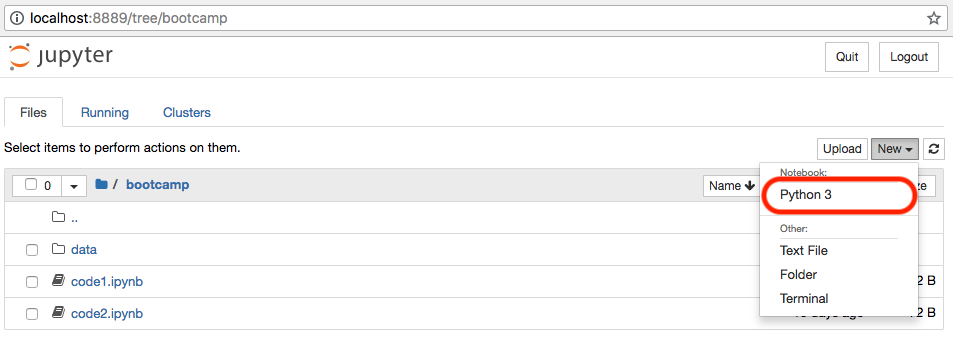

- #Root jupyter notebook tutorial how to#
- #Root jupyter notebook tutorial series#
- #Root jupyter notebook tutorial download#
That's OK, because GW150914 only has detectable frequency content in the range 20 Hz - 300 Hz. The sample rate is fs = 4096 Hz (2^12 Hz), so the data cannot capture frequency content above the Nyquist frequency = fs/2 = 2048 Hz. That's OK, because the noise is so high below fmin that LIGO cannot sense gravitational wave strain from astrophysical sources in that band. NOTE that we only plot the data between fmin = 10 Hz and fmax = 2000 Hz.īelow fmin, the data are not properly calibrated. max () print 'In both H1 and L1, all 32 seconds of data are present (DATA=1), ' print "and all pass data quality (CBC_CAT1=1 and CBC_CAT2=1)." max () bits = chan_dict_L1 print 'L1 CBC_CAT2: len, min, mean, max = ', len ( bits ), bits. max () bits = chan_dict_L1 print 'L1 CBC_CAT1: len, min, mean, max = ', len ( bits ), bits.

max () bits = chan_dict_L1 print 'L1 DATA: len, min, mean, max = ', len ( bits ), bits. max () bits = chan_dict_H1 print 'H1 CBC_CAT2: len, min, mean, max = ', len ( bits ), bits. max () bits = chan_dict_H1 print 'H1 CBC_CAT1: len, min, mean, max = ', len ( bits ), bits. max () #What's in chan_dict? See bits = chan_dict_H1 print 'H1 DATA: len, min, mean, max = ', len ( bits ), bits. max () print 'strain_L1: len, min, mean, max = ', \ max () print 'strain_H1: len, min, mean, max = ', \ # First, let's look at the data and print out some stuff: # this doesn't seem to work for scientific notation: # np.set_printoptions(precision=4) print ' time_H1: len, min, mean, max = ', \ Note that the the 4096 second long files at 16384 Hz sampling rate are fairly big files (125 MB).

#Root jupyter notebook tutorial download#
#Root jupyter notebook tutorial series#
This tutorial assumes that you know a bit about signal processing of digital time series data (or want to learn!). Else, you can use the GW150914_tutorial.py script.
#Root jupyter notebook tutorial how to#
If you know how to use "ipython notebook", use the GW150914_tutorial.ipynb file. This tutorial assumes that you know python well enough. Questions, comments, suggestions, corrections, etc: email to signal processing ¶ On Windows, or if you prefer, you can use a python development environment such as Anaconda ( ) or Enthought Canopy ( ).

You will need the python packages: numpy, scipy, matplotlib, h5py. Or you can run the python script GW150914_tutorial.py. To begin, download the ipython notebook, readligo.py, and the data files listed below, into a directory / folder, then run it.


 0 kommentar(er)
0 kommentar(er)
